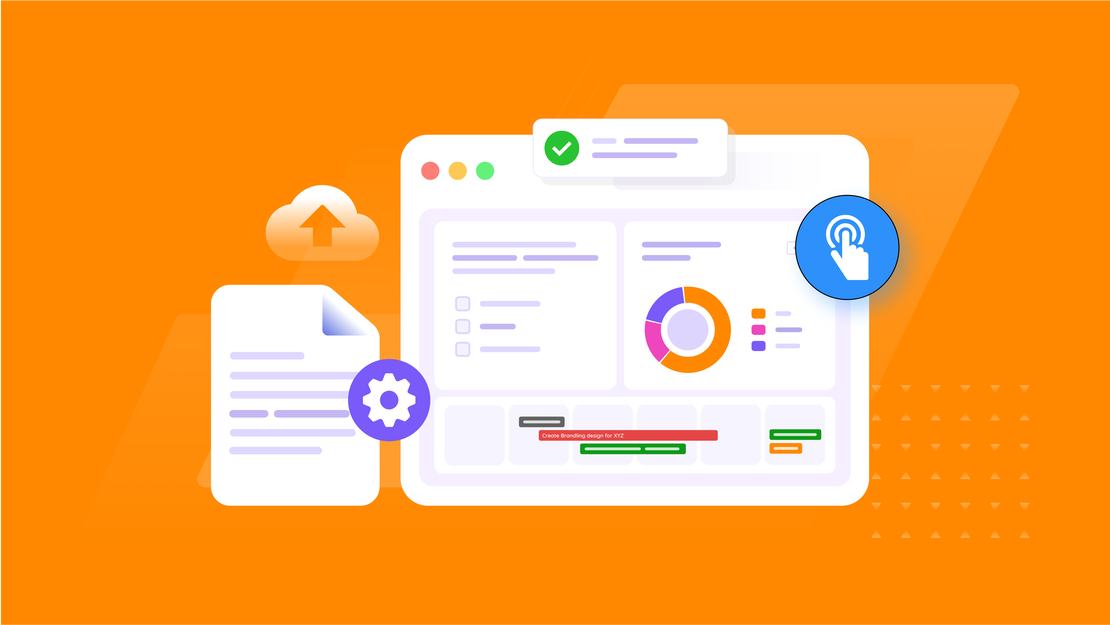Digitalization: What Is It and How Do You Get Started?

Table Of Contents
What is digitization?
Digitization means moving from paper-based or manual processes to digital ones. In other words: less printing, more clicking. Think of scanning receipts instead of filing them in a shoebox, sending invoices automatically, or storing customer data in an online system rather than a notebook. You can do all of this using software—like FlowQi.
Practical examples of digitization
Want to see what this looks like for different types of organizations? Here are some clear examples, categorized by type of organization:
- Government: Applying for a DigiD, filing your taxes online, or registering a change of address via your municipality’s website.
- NGOs: Managing volunteers through an app, sending automated newsletters, or tracking donor details in a CRM system.
- Medium-sized businesses: Creating quotes digitally, following up with automated emails, or tracking inventory with real-time data.
- Freelancers (solopreneurs): Letting clients book appointments online, sending invoices automatically, or signing documents digitally.
How do you start digitization?
If you want to get started with digitization—or deepen your digital transformation—begin with your biggest bottlenecks. What are your most frustrating tasks? There’s a digital solution for all of them.
To keep things manageable, focus first on the processes that cost your team the most time or lead to confusion.
Ask yourself:
- Why do we want to digitize?
- Where are our biggest time-wasters or frustrations?
- Which tasks are we still doing manually that could be automated?
- Where are we losing oversight?
- Where could we use more structure?
- What possibilities will open up if we embrace digital transformation?
1. Start with a CRM system
A CRM system is often the foundation of digitization for any organization, large or small. CRM stands for Customer Relationship Management. It helps you manage relationships with customers and stakeholders, collaborate more effectively, and store important information in one central place.
You can connect other tools to your CRM, allowing you to start automating processes from the start or later on.
2. Make sure everyone is on board
Digitization only works if everyone is on board. It requires the active involvement of employees and stakeholders. Involve your team in both the planning and implementation of your digital transformation. That way, you’re not only changing how people work—you’re also supporting a shift in mindset.
If you’re running an organization with multiple team members, keep the following in mind:
- Clearly explain why you’re digitizing. What’s in it for them? How will their work become easier, faster, or more enjoyable?
- Involve your team early on. Let them contribute ideas or test new tools with you.
- Offer clear instructions and guidance. Nobody likes using a system they don’t understand.
- Make it manageable. Take small steps and let people gradually get used to the new way of working.
- Prioritize accessibility. Choose systems that are intuitive and user-friendly—especially for those who are less digitally skilled. Tools like FlowQi are designed with simplicity in mind, which makes onboarding much easier.
3. Avoid fragmentation
Taking a phased approach to your digital transformation is smart, but watch out for fragmentation. If you start using too many disconnected tools (especially a mix of old and new systems), you’ll create a scattered digital environment. This forces your team to constantly switch between platforms, which disrupts productivity and focus.
To prevent this, choose tools that integrate easily with each other. FlowQi is designed to support seamless integration—both with its own modules and with external software.
For example, if you start with FlowQi CRM, you can later add tools like FlowQi Sales or FlowQi Support without losing consistency. Want to connect your email tool or bank account to FlowQi? No problem.
FlowQi offers a complete suite of tools to digitize your business or organization. Great starting points include:
- Centralize customer information with FlowQi CRM
- Track tasks and projects using FlowQi Task Management and Project Management
- Automate your invoicing with FlowQi Invoicing
- Create, store, and share documents easily via FlowQi Docs
Can you use free tools for digitalization?
Yes, you can. There are several free tools that support digital transformation, such as Google Docs, Trello, or Asana. But while they’re helpful, free tools come with limitations.
For example, you usually still need to switch between multiple platforms to manage different tasks. Free versions also tend to offer less storage space, limited security features, few or no automations, and watermarks or advertising in your documents.
And with some free tools—especially social media platforms and email services—you pay not with money, but with your data. Your information might be used for advertising or analytics purposes.
What are the benefits of digitalization?
Digitizing your business brings many advantages:
- You save time by reducing repetitive tasks
- You can serve customers and stakeholders more effectively
- Your work becomes clearer and more organized
- You make fewer mistakes
- Collaboration becomes easier, even remotely
- Your business can scale more easily
- You reduce waste and work more sustainably (less paper, less travel)
Try FlowQi for free and accelerate your digital transformation
Experience what FlowQi can do for your organization. Join our BETA Program and test all tools completely free of charge.